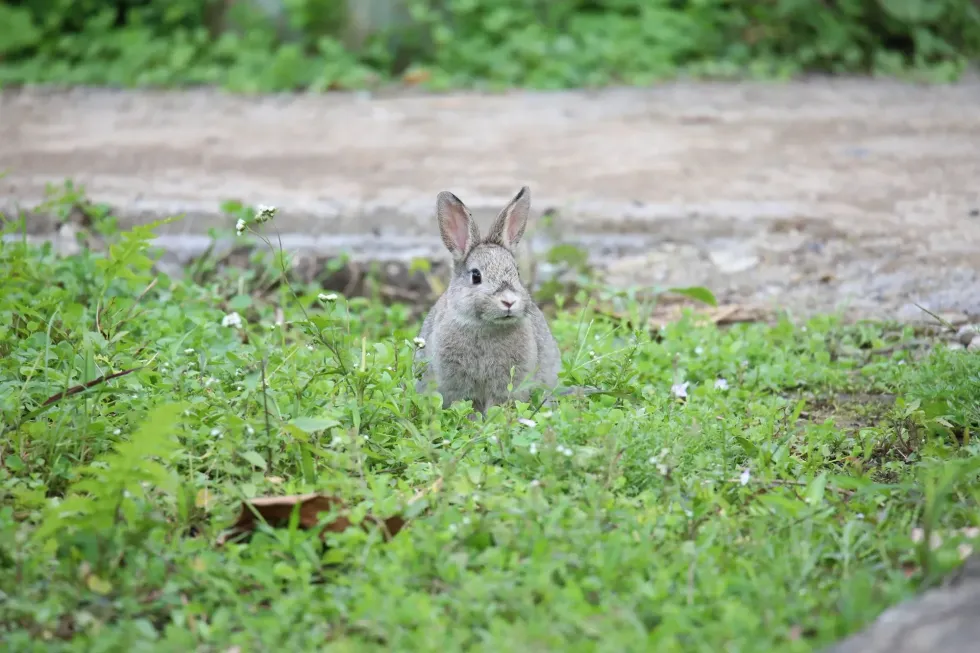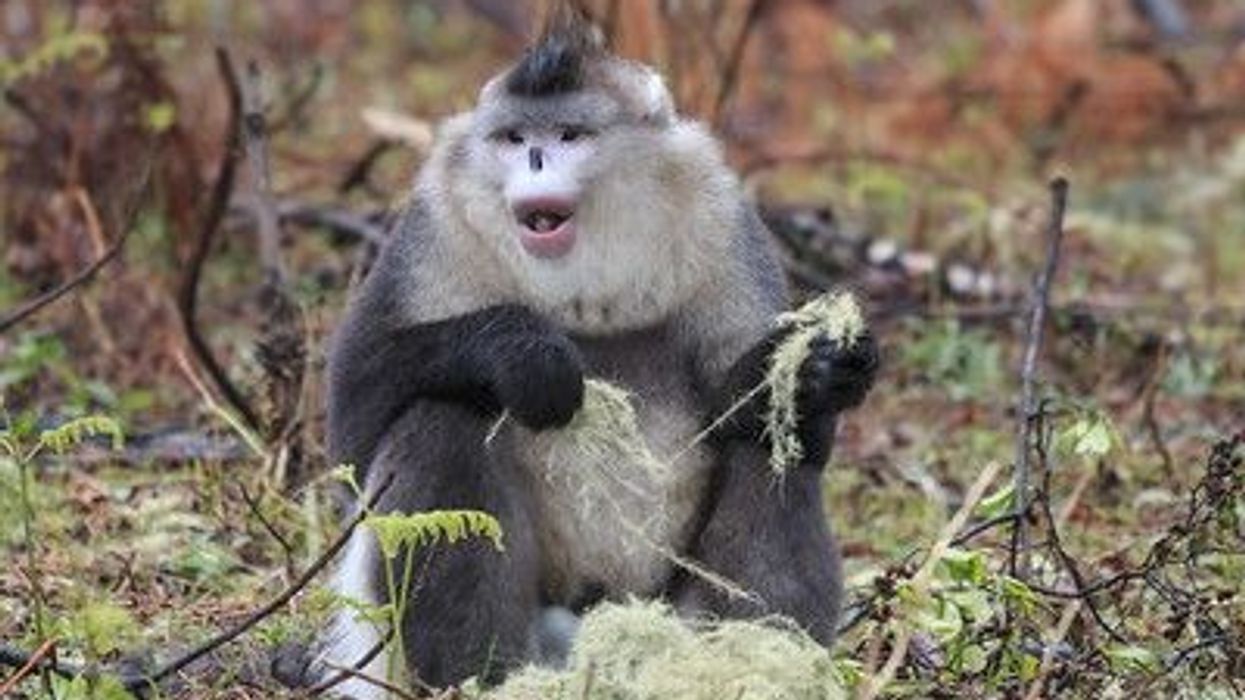The Chinese hare is a species of hare endemic to the continent of Asia. In Asia, this hare is mainly found in mainland China, with smaller populations in Vietnam and Taiwan.
The Chinese hare was once considered conspecific with the related Korean hare. It is found in a number of provinces in China including Anhui, Guangdong, Fujian, and Zheijang.
The Chinese hare likes to live at low altitudes in grasslands and near hilly expanses. This hare does not normally burrow into the ground but inhabits low forms of long vegetation.
The Chinese hare is a mostly solitary creature that has a life span of around one to five years. It has a low life span because of heavy predation by carnivorous animals and heavy hunting by humans.
The meat of the Chinese hare is a common food in Vietnam. Although, the Chinese hare is a species of Least Concern, hunting and habitat destruction due to agricultural practices are affecting the populations negatively.
For more relatable content, check out these European rabbit interesting facts and snowshoe hare facts for kids.
Chinese Hare Interesting Facts
What type of animal is a Chinese hare?
The Chinese hare (Lepus sinensis) is a hare.
What class of animal does a Chinese hare belong to?
The Chinese hare (Lepus sinensis) belongs to the Mammalia class of animals.
How many Chinese hares are there in the world?
The exact number of Chinese hares (Lepus sinensis) present in the world is unknown because their populations haven't been properly quantified and they endure heavy pressures from hunting.
Where does a Chinese hare live?
The Chinese hare (Lepus sinensis) is endemic to the continent of Asia. It naturally occurs mostly in China in the provinces of Anhui, Guangdong, Fujian, Guangxi, Hunan, Guizhou, Jiangxi, Jiangsu, and Zheijang. This hare is also found in a small region in northeast Vietnam as well as in Taiwan.
What is a Chinese hare's habitat?
The Chinese hare (Lepus sinensis) lives its life at low altitudes. It likes to inhabit hilly expanses that have scrubby vegetation. This hare is also found in open edge grasslands. The Chinese hare may burrow but for nesting, it chooses long vegetation.
Who do Chinese hares live with?
Chinese hares (Lepus sinensis) lead a solitary life but may be seen with mates during the breeding season. Also, they are nocturnal and are rarely seen during daylight hours.
How long does a Chinese hare live?
Not a lot is known about the life span of Chinese hares (Lepus sinensis), but they may live for anywhere between one to five years.
How do they reproduce?
Chinese hares (Lepus sinensis) reproduce by mating and giving birth to live offspring. The nest is built among long vegetation in grasslands and hilly expanses. Typically, a litter of three hares is born and the young ones are precocial at birth.
After being born, the young leverets are fed by their mothers once a day. The milk of Chinese hares is very rich in fat and proteins and the lactation period goes on for close to three weeks. The young suffer heavy predation from other carnivorous species.
What is their conservation status?
The conservation status of the Chinese hare (Lepus sinensis) species according to the International Union for Conservation of Nature is Least Concern.
Chinese Hare Fun Facts
What does a Chinese hare look like?
There is some sexual dimorphism in this species as females are bigger than the males. The fur of Chinese hares is coarse and short. The chest and the back are colored chestnut-brown.
The belly is more whitish and the tail tends to be brown. The hind feet of Chinese hares are furred and the ear tips have black, triangular patches. Chinese hares are separated from other Lepus species via the details and shape of the teeth and skull.

* Please note that this is an image of a European hare, not a Chinese hare. If you have an image of a Chinese hare, please let us know at hello@kidadl.com.
How cute are they?
Chinese hares are absolutely adorable. They have the cutest, most innocent faces, and huge ears. They are earthy-colored with shades of brown, black, and white. They are harmless and herbivorous and the most charming thing about them is their sprightly, hind-legged run to get away from perceived danger.
How do they communicate?
Like other hares, Chinese hares may communicate through scents and drumming of their feet. The mothers may make a shrieking call to the young for feeding.
How big is a Chinese hare?
Chinese hares (Lepus sinensis) are 16-30 in (40.6-76.2 cm) long which makes them two to three times bigger than Netherland dwarf rabbits.
How fast can a Chinese hare run?
Chinese hares (Lepus sinensis) are very quick and they can achieve speeds close to 45-50 mph (72.4-80.5 kph).
How much does a Chinese hare weigh?
Chinese hares (Lepus sinensis) weigh 2.8-4.3 lb (1.3-1.9 kg).
What are the male and female names of the species?
Males and females of the Chinese hare species are called bucks and does respectively.
What would you call a baby Chinese hare?
A baby Chinese hare is called a leveret.
What do they eat?
Chinese hares have a herbivorous diet that consists of grasses, plant material, green shots, twigs, buds, and bark of wood.
They themselves may get preyed upon by owls, gray wolves, red foxes, large raptors, and snakes.
Are they poisonous?
No, Chinese hares are not poisonous at all.
Would they make a good pet?
No, Chinese hares would not make good pets. They are a wild species and haven't exactly been domesticated. They are herbivorous, harmless, and solitary but still wild. There are certain things that can be done to protect Chinese hares better.
They are sold and hunted for their meat. The Vietnamese and southeast Chinese populations are declining due to hunting. Proper research needs to be done to improve the status and distribution of the isolated Chinese hare species that suffer because of agriculture.
Did you know...
Chinese hares consume a herbivorous diet that consists of wood and plant matter. They can produce two different kinds of feces, moist as well as dry pellets. Interestingly enough, they immediately consume the moist pellets in order to extract the full nutrients from the food.
The Chinese hare may have some mythical relevance in Chinese and East Asian cultures as the moon hare. The moon hare, also known as the jade hare, was a mythical hare or rabbit that lived on the lunar surface.
In the Jataka tales, the moon hare, or the jade hare, throws itself into a fire to offer itself as food to a beggar.
The beggar turns out to be a Sakra lord who is touched by the sacrifice of the moon hare and draws the rabbit's likeness on the moon. Some still believe that the moon is draped with the moon rabbit's fire smoke.
How is the Chinese hare different from a regular hare?
Hares are found all around the world whereas Chinese hares are endemic to Asia specifically China, Vietnam, and Taiwan. Hares come in a variety of colors like white, black, tan, gray, and orange-reddish.
The Chinese hare is predominantly pale brown and whitish with some black. All hares belong to the Lepus genus. There are 88 different species of hares of which Chinese hare is one.
The Chinese hare itself has three subspecies, the L. s. formosus, the L. s. sinesis, and the L. s. yuenshanensis. The Korean hare (Lepus coreanus) was also considered a Chinese hare type once.
Are Chinese hares endangered?
The Chinese hare is not an endangered species. They are a species of Least Concern on the IUCN's Red List.
Here at Kidadl, we have carefully created lots of interesting family-friendly animal facts for everyone to discover! Learn more about some other mammals from our brown hare interesting facts and mountain hare surprising facts pages.
You can even occupy yourself at home by coloring in one of our free printable chinese hare coloring pages.









